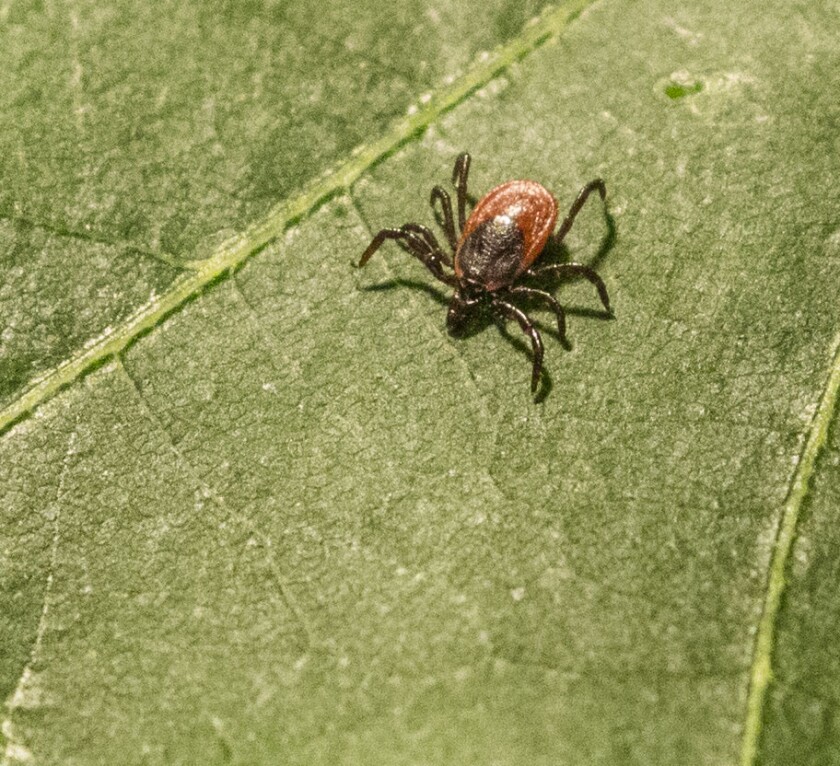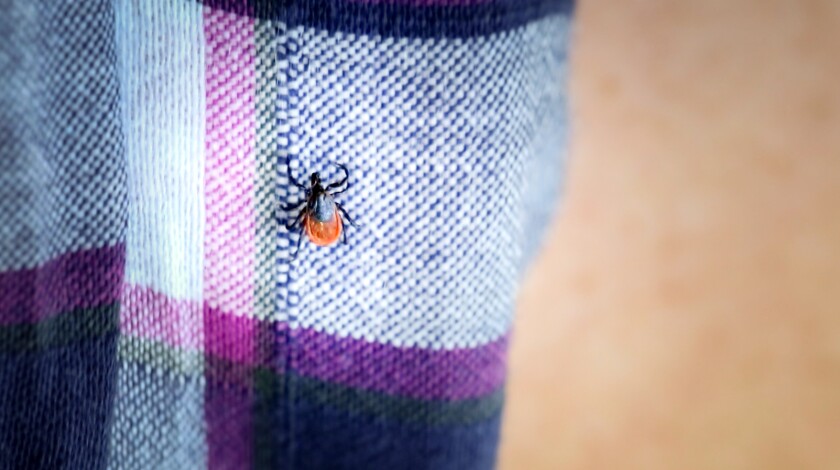DULUTH — Reports of Powassan virus, a potentially fatal tick-borne illness that can have permanent neurological effects, are increasing across the country, including in Minnesota, which had 14 confirmed cases in 2024.
Though the aggressive and quickly transmissible virus is rare, public health officials are urging precautions as tick season approaches.
“What we try to remind people is yes, it's scary, but it is really rare,” said Elizabeth Schiffman, a Minnesota Department of Health epidemiologist specializing in mosquito- and tick-transmitted diseases. “Don't forget to do all those prevention things that we talk about that no one ever wants to do because they're boring and not fun. Do your tick checks. Know when your risk is highest.”
Powassan virus is primarily transmitted to humans by one of Minnesota’s 13 tick species: the blacklegged tick, also known as the deer tick. Symptoms of Powassan include seizures, paralysis, speech difficulties, and, in severe infections, meningitis and brain inflammation.
This really has been an understudied virus to date, and the number of cases have been increasing over the past, say, 10 to 15 years.

An estimated 10%-15% of Powassan virus cases are fatal, and around half of infected individuals sustain long-term neurological problems such as recurring headaches and memory issues.
There are no treatments or vaccines for Powassan.
“It replicates in neurons, and it replicates in cells that are in brain cells, and so through simple destructive processes in the brain, you're going to have downstream effects that result in these long-term cognitive impacts,” said Matthew Aliota, professor at the University of Minnesota Department of Veterinary and Biomedical Sciences. “Powassan has the capacity to invade the central nervous system, to cross the blood/brain barrier and to infect brain cells, and that can have really bad long-term consequences.”
Aliota received a $3.5 million grant from the National Institutes of Health in 2024 to assess the potential public risk of and build a foundational understanding of Powassan, focusing on Minnesota and New York — two of the country’s Powassan epicenters. The Centers for Disease Control and Prevention reported 54 human cases across 10 states in 2024.
“This really has been an understudied virus to date, and the number of cases have been increasing over the past, say, 10 to 15 years,” he said. “Some of this is related to better recognition by clinicians, but some of it I think is just ecology as well, a true increase.”
ADVERTISEMENT
Powassan is often compared to Lyme disease because both are spread by blacklegged ticks, but Aliota says the two are “apples to oranges.” Lyme disease is significantly more common than Powassan and is not a virus.

Lyme disease is spread by Borrelia burgdorferi, a bacteria a tick acquires when feeding on white-footed mice. These comparisons have led some to believe — possibly incorrectly — that the white-footed mouse is also a reservoir for Powassan. It is unknown which tick host animal harbors Powassan; some ticks are also born with the virus.
“People have just assumed that that mouse is the same host for Powassan as well, but we don't know that,” Aliota said. “That's one of the questions that my lab is trying to answer.”
Reasons for increasing Powassan reports may include more abundant animals for ticks to prey on: white-tailed deer, a favorite host of the blacklegged tick, have larger numbers in the state than in past decades.
In addition, more people may live near deer ticks than compared to a few decades ago. As housing developments are built and expanded, more people encroach on tick habitats. Many suburbs have wooded pockets on their edges, and these forest fragments place ticks close to people.
“It kind of creates this ideal habitat for encounters between humans and this tick species,” Aliota said.
To increase awareness of Powassan, Minnesota Department of Health epidemiologists like Schiffman frequently give presentations to inform health care providers, medical associations and the public about the virus.
ADVERTISEMENT

“So it's about hammering home that messaging like, ‘Well, when we talk about tick-borne diseases, it's more than just Lyme disease,’ ” she said. “We talk with providers, ‘Here's how you find these rare cases, and if you have a person who you can't figure out what they have, please loop us in at MVH, we'd love to help you sort out what might be causing that person's illness.’ ”
People who exhibit mild or no symptoms are less likely to seek testing, and for patients who are tested, the virus’ rarity may lead some doctors to overlook the possibility of Powassan. Most diagnostic labs in the state are unable to screen for Powassan, meaning doctors must send blood work to places like Mayo Clinic or the Minnesota Department of Health for detection.
“I think with the way that we capture these cases and the way we do surveillance, we're kind of biased towards the more severe cases,” Schiffman said. “We're probably missing some of the milder ones, just as an artifact of how that testing is done.”
That bias may extend to the age demographics of infected individuals. More than 70% of cases reported nationally within the past two decades occurred in people age 50 or older.

“We also tend to see a lot of people who are older and who have those immunosuppressive conditions in our case population that we report on because they're also more likely to be the ones who get sicker,” Schiffman said. “If you're sicker, you're probably more likely to be tested. So you're definitely biasing the data in that way.”
The Minnesota Department of Health recommends being aware of areas at high risk of tick activity, using Environmental Protection Agency-registered tick repellent (epa.gov/insect-repellents/find-repellent-right-you) and diligently checking the skin and clothing after outdoor activities.














